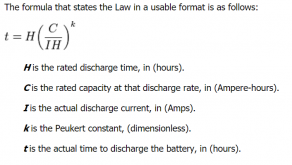rin67630
Solar Enthusiast
It is generally admitted, that sulfatation is mainly an irreversible process.I also ran across this guy's videos on trying to recover damaged lead acid batteries. Its kind of instructive on what can be done with a bad lead acid battery but also shows how much time and energy it can take.
This "desulfatation" can only be a process to detach the sulfated layer from the plates and with it, the involved lead content from the plates.
You may temporarily regain some apparent battery life for certain time, but the most part of the active lead is just bricked, and is, at the bottom of the battery, just waiting to provoke the next shortcut a few days later.
Last edited:



